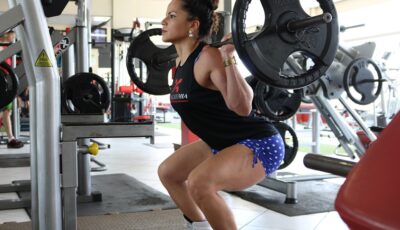The Evolution of Bodybuilding: From Ancient Greece to Modern Fitness Culture
The sport and art of bodybuilding have a long and rich history that dates back to ancient times. From the physical fitness ideals of ancient Greece to the modern fitness culture of today, the practice of bodybuilding has evolved significantly over the centuries.
In ancient Greece, physical fitness and the development of the body were highly valued. The Greeks believed that a strong and healthy body was essential for achieving a balance between the mind, body, and spirit. This philosophy laid the foundation for the practice of bodybuilding as we know it today.
One of the earliest recorded instances of bodybuilding can be traced back to ancient Egypt, where images of men with well-developed physiques have been found on tomb walls and artifacts. In Greece, statues such as the famous “Discobolus” depict the ideal muscular physique that was admired and sought after by ancient athletes and warriors.
During the Roman Empire, physical fitness and bodybuilding were further promoted as important components of a healthy and prosperous life. Roman gladiators and soldiers were known for their strong and muscular bodies, which they developed through intense training and physical conditioning.
The practice of bodybuilding as a competitive sport truly began to take shape in the late 19th and early 20th centuries. Pioneers such as Eugen Sandow, known as the “Father of Modern Bodybuilding,” and Bernarr Macfadden, a prominent advocate for physical fitness and strength training, helped popularize the concept of developing the body through exercise and diet.
In the 20th century, bodybuilding gained widespread popularity thanks to the emergence of iconic figures such as Charles Atlas, who popularized strength and fitness through his “Dynamic Tension” training methods, and Joe Weider, who founded the International Federation of Bodybuilding & Fitness (IFBB) and created the Mr. Olympia competition, which remains one of the most prestigious bodybuilding events in the world.
The evolution of bodybuilding continued with the rise of Arnold Schwarzenegger, who became a global icon and ambassador for the sport. Schwarzenegger’s success and popularity helped propel bodybuilding into the mainstream, leading to a surge in interest and participation in the sport.
Today, bodybuilding and fitness culture have evolved to encompass a wide range of disciplines and practices, including powerlifting, strongman competitions, CrossFit, and more. The focus on physical fitness and achieving an aesthetic, muscular physique remains a central tenet of bodybuilding, but the emphasis on overall health, wellness, and functional strength has also gained prominence.
The integration of science, nutrition, and technology has revolutionized the way bodybuilders and fitness enthusiasts approach training and conditioning. Advances in supplements, training methods, and equipment have allowed individuals to achieve higher levels of physical development and performance.
Moreover, the rise of social media and digital platforms has given rise to an online fitness community, where individuals from around the world can connect, share their experiences, and seek inspiration and guidance from one another.
The evolution of bodybuilding from ancient Greece to modern fitness culture reflects the enduring pursuit of physical excellence and the desire to cultivate a strong, healthy body. As the sport continues to grow and change, it will be fascinating to see how bodybuilding and fitness culture will continue to evolve in the years to come.





